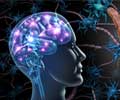The most common genetic disorder in live born children occurring as an outcome of a chromosomal abnormality is Down syndrome (DS).

The authors focus on insights emerging from animal models of Down syndrome and outline the structural abnormalities in the DS brain. They also discuss studies that have linked the overexpression of the amyloid precursor protein gene, called APP, to the degeneration of neurons in mice. These findings have led to the development of therapeutic treatments in mice, which now must be tested in humans.
"For more than a decade, we have been working on identifying a strategy to treat cognitive disabilities in our Down syndrome mouse models," said Dr. Salehi. "Considering the research and results with mouse models as an indication of success of a strategy in humans, we are ever closer to finding ways to at least partially restore cognitive function in children and adults with Down syndrome."
Interestingly, this research is also providing insights into Alzheimer's disease (AD), the archetypal disorder of late life. All adults with Down syndrome develop AD pathology by age 40, and there are some remarkable similarities in the brain degeneration and cognitive dysfunction of individuals with DS and those with AD.
The leading AD hypothesis posits that it is caused by increasingly elevated levels of amyloid-related proteins, which are toxic to nerve cells in the brain. These same proteins also accumulate in the brains of people with DS because they are made by the APP gene, which is located on chromosome 21. Individuals with AD don't have the extra chromosome, of course; rather, it is mutations in APP that appear to cause the brain degeneration associated with AD.
Dr. John Krystal, editor of Biological Psychiatry, commented: "The convergence of research on Down syndrome and Alzheimer's disease highlights a central point that cannot be overstated. When we understand the fundamental biology of the brain, important new conceptual bridges emerge that guide new treatment approaches."
Advertisement
Source-Eurekalert















